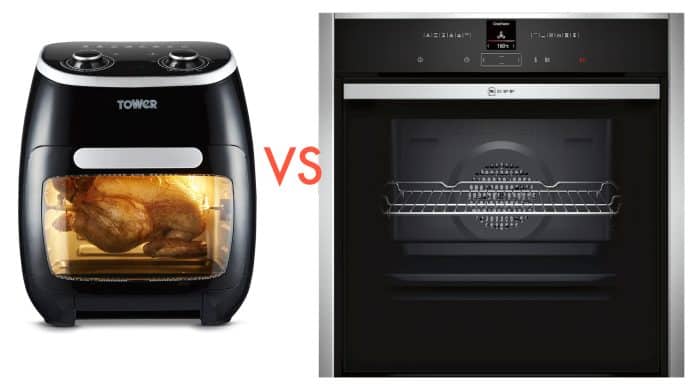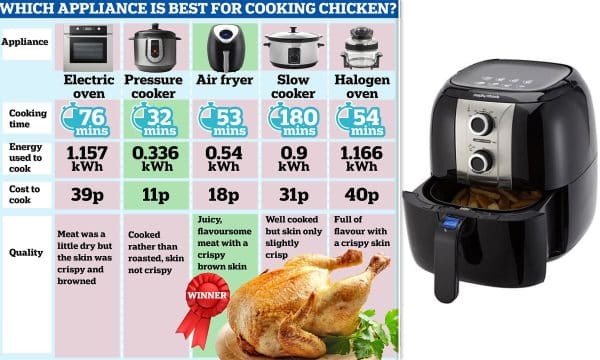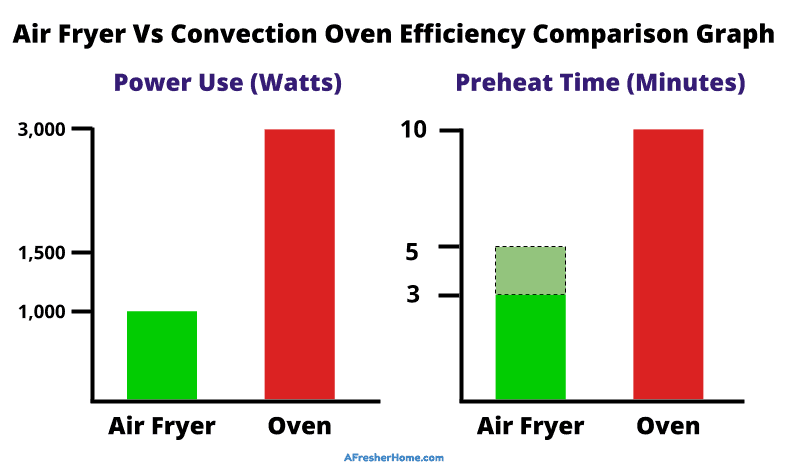Air fryers have gained immense popularity recently as a healthier alternative to deep frying.
With their promise of crispy and delicious dishes with minimal oil, many are eager to know how energy-efficient these appliances are compared to their traditional oven counterparts.
This article will explore the energy consumption of air fryers and traditional ovens, shedding light on which option may be more eco-friendly and cost-effective.
Whether you’re a cooking enthusiast or simply seeking to make greener choices in the kitchen, join us as we uncover the energy efficiency of air fryers and traditional ovens.
Definition of Energy Efficiency
Energy efficiency refers to the ability of a device or system to perform its intended function while minimizing the amount of energy it consumes. It measures how well a product or appliance utilizes energy to accomplish a specific task.
The more energy-efficient a device is, the less energy it will require to achieve the desired outcome. This is an essential consideration today, as energy consumption directly impacts our utility bills and the environment.
Energy Consumption of Air Fryers
Power Demand
Air fryers are known for their energy efficiency, particularly when compared to traditional ovens. One significant factor is the power demand for air fryers. These appliances typically have a lower wattage requirement compared to traditional ovens.
While traditional ovens can consume anywhere from 2,000 to 5,000 watts, air fryers usually require around 800 to 1,500 power. This lower power demand contributes to their energy efficiency and can significantly save energy over time.
Preheating Time
Another aspect that contributes to the energy efficiency of air fryers is their preheating time. Traditional ovens generally require considerable time to preheat before you can start cooking. This preheating period consumes energy, even if you are not actively using the oven for cooking.
In contrast, air fryers typically have much shorter preheating times, if any. Some air fryers are designed to start cooking immediately after being powered on, eliminating the need for preheating altogether. This reduced preheating time contributes to the overall energy efficiency of air fryers.
Energy Consumption of Traditional Ovens
Power Demand
In comparison to air fryers, traditional ovens have higher power demands. As mentioned, they can consume anywhere from 2,000 to 5000 watts of power. This higher power requirement is due to the larger size and heating elements used in traditional ovens. While traditional ovens offer more cooking options and larger capacities, they consume more energy.
Preheating Time
Traditional ovens typically require a longer preheating time compared to air fryers. This is because traditional ovens are designed to heat a larger space and require more time to reach the desired cooking temperature. The longer preheating time adds to the energy consumption of traditional ovens, as energy is used solely to heat the oven itself.
Cooking Time Comparison
When comparing the cooking time of air fryers and traditional ovens, it is essential to consider the specific recipe and cooking method used. The cooking time can vary significantly based on factors such as the type of food being prepared, its quantity, and the selected cooking temperature.
However, air fryers generally have faster cooking times compared to traditional ovens. This is primarily because air fryers use a convection cooking method, which circulates hot air around the food, resulting in quicker and more efficient cooking.
Cooking Methods Comparison
Convection Cooking
Air fryers utilize convection cooking, which involves hot air circulation around the food. This method helps to cook food faster and more evenly, resulting in energy efficiency.
The circulating hot air allows for the crispiness of fried foods but with significantly less oil than traditional frying methods. Convection cooking not only reduces cooking time but also contributes to reduced energy consumption.
Radiation Cooking
Traditional ovens primarily rely on radiation cooking, where heat is generated by heating elements and transferred directly to the food. This method often leads to uneven heat distribution and longer cooking times. While radiation cooking is suitable for specific recipes and cooking styles, it consumes more energy than convection cooking.
Conduction Cooking
Both air fryers and traditional ovens utilize conduction cooking to some extent. Conduction cooking occurs when heat is transferred from the heating element to the cookware and then to the food. The efficiency of conducting cooking depends on the type and quality of the cookware used. Well-conductive cookware materials, such as copper or cast iron, help distribute heat more effectively, resulting in energy-efficient cooking.
Heat Distribution
One crucial factor in energy efficiency is heat distribution throughout the cooking process. In air fryers, the high-speed circulation of hot air ensures even heat distribution, leading to efficient cooking. This eliminates the need to rotate or flip the food during cooking, ultimately saving energy.
Traditional ovens, on the other hand, may have less consistent heat distribution due to their size and heating element placement. This can result in the need to rotate or rearrange the food during cooking to ensure even cooking, which can use more energy.
Cooking Capacity Comparison
When it comes to cooking capacity, traditional ovens generally have the advantage. They offer larger cooking spaces and can accommodate more significant quantities of food than air fryers. However, it’s important to note that cooking smaller quantities of food or single-serving meals in a large traditional oven can waste energy. In such cases, air fryers become more energy-efficient and are designed to cook smaller portions more efficiently.
Energy Efficiency Tips for Air Fryers
Use Correct Temperature
Setting the correct temperature for the prepared food is essential to maximize energy efficiency when using an air fryer. A higher temperature than necessary can lead to excessive energy consumption and potentially overcooked food. Following the recommended temperature guidelines and adjusting accordingly can help minimize energy usage while achieving the desired results.
Prepare Food Properly
Properly preparing the food before cooking can also contribute to energy efficiency. Ensuring that food is evenly sized and arranged correctly in the air fryer basket allows for efficient and even cooking. This eliminates the need to rearrange or cook items in multiple batches, saving time and energy.
Avoid Overcrowding the Basket
Overcrowding the air fryer basket can hinder proper air circulation and heat distribution, resulting in longer cooking times and potential energy waste. It is recommended to leave enough space between food items for proper airflow. If cooking larger quantities, consider cooking in multiple batches to ensure energy efficiency.
Clean the Air Fryer Regularly
Regularly cleaning your air fryer is essential for maintaining its energy efficiency. The build-up of grease or food residues can obstruct air circulation and affect cooking performance. Regularly clean the cooking basket, removable trays, and exterior surfaces according to the manufacturer’s instructions to ensure optimal energy efficiency.
Energy Consumption Impact on Utility Bills
The energy consumption of our household appliances has a direct impact on our utility bills. Choosing energy-efficient appliances, such as air fryers, can help reduce energy usage and lower electricity costs over time.
With their lower power demand and shorter preheating times, air fryers can provide significant energy savings compared to traditional ovens. By being mindful of our energy consumption and choosing energy-efficient options, we can contribute to lower utility bills and a more sustainable future.
Environmental Impact Comparison
Carbon Footprint
Reducing our carbon footprint is essential for mitigating the effects of climate change. When comparing air fryers and traditional ovens, air fryers generally have a smaller carbon footprint. Their lower energy consumption and more efficient cooking methods reduce greenhouse gas emissions compared to traditional ovens. By opting for energy-efficient appliances like air fryers, we can positively impact the environment and work towards a greener future.
Waste Generation
The environmental impact of appliances goes beyond their energy consumption. With compact size and minimalist design, air fryers often generate less waste than traditional ovens. Traditional ovens require larger cooking spaces, which can result in more packaging waste and food leftovers. Air fryers’ smaller cooking capacity encourages portion control and reduces the chances of excessive food waste, thereby contributing to a more sustainable lifestyle.
In conclusion, air fryers offer more energy efficiency advantages than traditional ovens. Their lower power demand, shorter preheating time, faster cooking, and efficient cooking methods make them a compelling option for energy-conscious individuals.
By adopting energy-efficient cooking practices and being mindful of our energy consumption, we can positively impact our utility bills and the environment. So, consider adding an air fryer to your kitchen and enjoy delicious meals while saving energy.







































